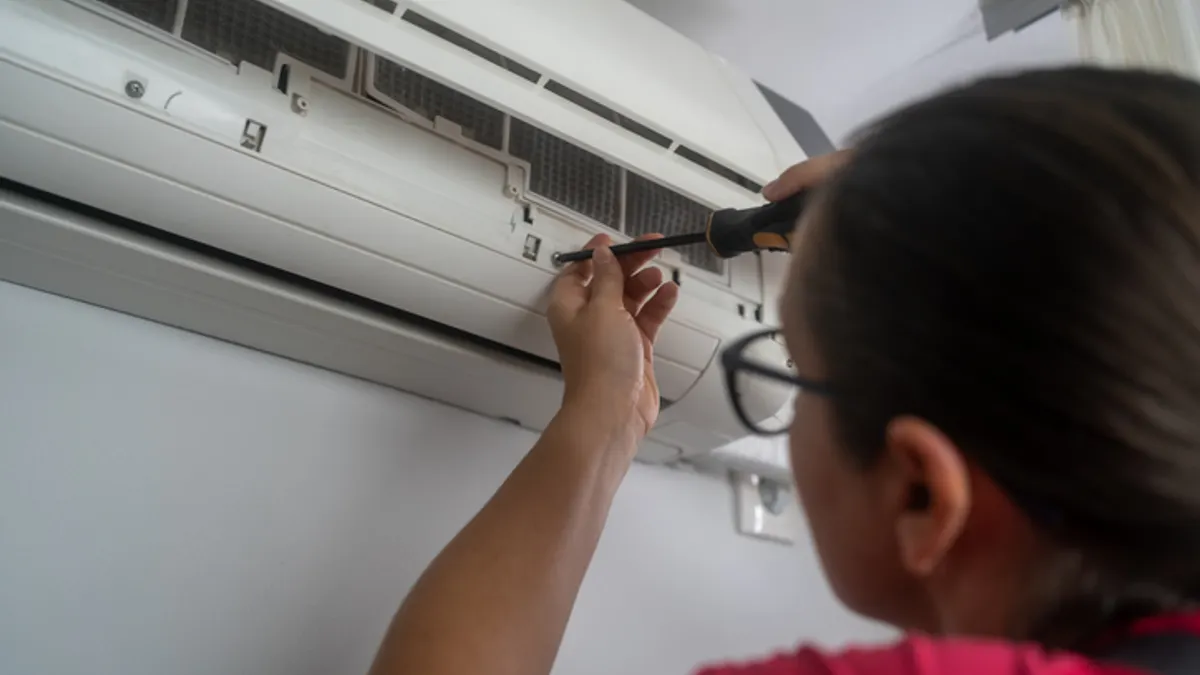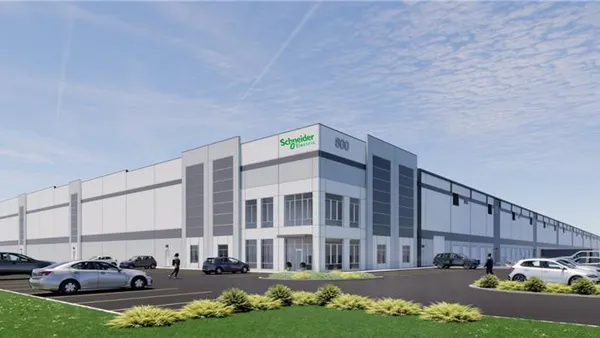Building owners and operators can leverage the integration of information and operational technology systems to increase efficiency in everything from capital planning to maintenance.
In older facilities, building systems such as electrical and HVAC typically operate as isolated entities with analog controls. These siloed systems are a massive pain for owners seeking efficiency insights and greater responsiveness.
With the increasing convergence of information technology (IT) and operational technology (OT) systems, the connectivity and convenience of everyday mobile apps are now permeating the commercial building space. From the early stages of capital planning to commissioning and long-term maintenance, the IT/OT convergence offers multiple benefits for facility leaders.
System upgrade for building technologies
Deploying smart building technologies that leverage sensors, Internet of Things (IoT) devices and data analytics can offer owners significant savings, according to the World Economic Forum. For starters, implementing basic automated building controls can decrease a commercial building's energy usage by 10% to 15%. Integrating HVAC and lighting systems can produce up to 18% in additional savings over conventional controls. These foundational savings are further amplified when systems are truly integrated and data-driven.
Integrated controls allow facility operators to monitor the real-time performance of multiple systems via a building management system (BMS) and dashboard. Adding different systems to a shared network requires products and solutions that can bridge traditional siloes. For example, lighting fixtures embedded with occupancy and daylight sensors can send data to the BMS to adjust security measures, limit HVAC usage to occupied areas and improve space utilization. This level of dynamic responsiveness is where the true power of convergence becomes apparent.
“Smart electrical panels and submetering that provide real-time energy data and circuit status can reduce overall energy costs, ensure accurate tenant billing and alert operators to maintenance needs,” says Randy Mortensen, executive vice president of global distribution sales and marketing at Leviton.
At the foundation of an integrated system is a converged network infrastructure (uLAN), “a single, robust IP network that supports all building systems,” Mortensen says. Installing a uLAN system compared to individual, disparate networks can cost less, enhance cybersecurity and provide more integrated comprehensive building intelligence that helps owners make informed decisions.
Streamlined supply chains
The effect of IT and OT convergence offers advantages in capital planning, procurement and project management during new construction or retrofit efforts.
“Facility operators and owners traditionally navigate complex, often opaque, supply chains to acquire and deploy necessary components,” Mortensen says. “Linear relationships are becoming dynamic with interconnected ecosystems, which can ultimately improve product availability and on-time project delivery.”
Ongoing shifts in the broader supply chains mirror these building advancements as formerly disparate entities learn to collaborate more effectively.
“Distributors are expanding into value-added services, manufacturers are seeking deeper end-user engagement, and contractors are leveraging digital platforms for enhanced project management,” Mortensen says. “Hyper-visibility through IoT and blockchain is transforming the acquisition and deployment of building components.”
How to attain uLAN benefits and savings
Owners embarking on capital projects can position themselves to take advantage of a world where the integration of things in the built environment has become the status quo, not the exception.
During project planning, project stakeholders can engage with experts to facilitate building system integrations, components and platforms that will support data exchange and coordinate different product categories. Some manufacturers have internal technical teams that will provide guidance on integrating their solutions within a larger converged system.
As an example, Mortensen references Leviton experts who can recommend interoperable products that use open communication protocols, provide installation best practices and technical support for deploying and commissioning controls, lighting, electrical and network solutions.
For ongoing capital improvement efforts and equipment updates, Mortensen says owners should “prioritize products and solutions adhering to key industry standards and certifications for interoperability, reliability, and future-readiness.”
Features to look for include:
- IP-based systems and open protocols to ensure devices can communicate across different manufacturers and networks.
- UL-listed products for electrical safety and installation procedures that adhere to the National Electrical Code.
- Compliance with energy-efficiency standards, such as ASHRAE 90.1, and support of building performance certifications, such as the U.S. Green Building Council’s LEED program.
- Compliance with cybersecurity best practices, including encryption and security updates for continuous protection of converged IT/OT networks.
The convenience of a connected world can extend to owners and operators when their building systems support converged supply chain processes and IT/OT operations. More manufacturers are actively embracing open protocols and designing products for integration than ever before.
“This trend is driven by customer demand for interoperability, the rise of IoT and the desire to offer more valuable, flexible and future-proof solutions that work seamlessly within broader building ecosystems,” Mortensen says.
Building owners have an opportunity to take a more considered approach to how they are specifying vendor solutions that ultimately streamline maintenance, reduce operating costs and improve tenant relationships while ensuring building assets are ready for a more connected future. Learn more about how Leviton is helping stakeholders achieve convergence.










